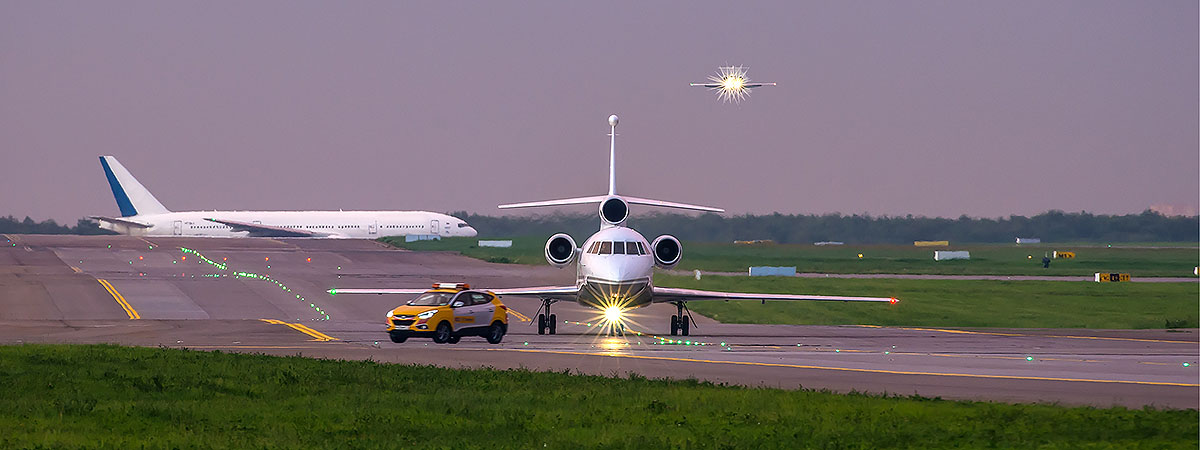The collective awareness about the need to fight climate change is increasing inexorably with every passing day. Within this momentum of thought and action, there are organisations and individuals who point their finger at the aviation industry as one of the main sources of CO2 emissions into the atmosphere. Without wanting to challenge these critical positions, it is important to consider what truth there is behind these kinds of statements, and to discover what the aviation industry is doing to mitigate any impact on the environment.
Both collectively and individually, we all have a role to play in the fight against climate change. Within the aeronautical sector, climate action is not just a theoretical issue, but one that has been on the agenda of all stakeholders for many years.
For the last ten years, almost 350 airports around the world, accounting for over 43% of the world’s air traffic (3.3 billion passengers per year), have been striving to achieve carbon neutrality. 50 have already achieved it.
In the aeronautical sector there are two areas for climate action: airports and the aeronautical industry.
In the case of airports, the main organisations in the sector, led by the ACI (Airports Council International), play an important role, as do the committed actions carried out by the airport operators themselves.
The ACI launched the Airport Carbon Accreditation (ACA) programme in Europe in 2009, (click here), aimed at promoting and boosting the actions undertaken by airports to reduce carbon emissions into the atmosphere. In 2014 this accreditation was extended to airports worldwide and, to date, almost 350 airports in 70 countries around the world have joined the initiative. This represents 43% of the world’s airport traffic (around 3.3 billion passengers). Of these, 50 airports have already achieved, or are about to achieve, carbon neutrality, i.e. a net zero balance between carbon emissions and carbon removal.
Airports that have joined the ACA programme are committed to measuring, managing and reducing CO2 emissions from their operations and, in a second phase, to do the same with all companies associated with the airport. To do so, airport operators have to take into account all emission sources under their direct control. This means acting in many areas, such as lighting efficiency, heating, switching to hybrid or electric ground vehicles, using renewable energy, and improving energy management. The momentum generated by this way of thinking and acting has a positive influence on the planning and implementation of other actions related to responsible environmental management, including waste management and the use of more environmentally friendly products and materials.
In practice, the ACA has been adopted as a standard for carbon management at airports. It is fully in line with international standards concerning the airport industry, such as the Greenhouse Gas Protocol and ISO 14064, and it is regularly reviewed and updated accordingly.
The airport accreditation process is structured over four levels that become increasingly stringent. This is a good strategy, because it means that no matter how poor an airport’s starting situation is, environmentally speaking, it always has the capacity to follow the improvement programme, until it eventually reaches carbon neutrality. The four phases of the accreditation are as follows:
The first stage is mapping. This requires a commitment from the airport to reduce greenhouse gas emissions. This agreement must be endorsed by the airport managers and must focus on all processes under the airport’s direct control.
The second level is reduction. This requires the fulfilment of all accreditation requirements of the previous stage, as well as the formulation of a carbon emissions reduction target, the development of a carbon emissions management plan and the effective annual reduction of emissions that are under the airport’s control.
The third phase is optimisation. In addition to meeting the requirements of the previous level, this phase includes the development of a more stringent carbon footprint target and the formulation of a plan for the participation of other stakeholders involved in the airport’s operation.
The last level is that of carbon neutrality. This requires compliance with level 3 of the accreditation process, as well as offsetting any residual emissions under the airport’s control that cannot be eliminated or reduced.
There are currently 89 airports that comply with the mapping phase (level 1); 77 are already at the reduction stage (level 2); 58 are in the optimisation phase (level 3); and 50 have reached carbon neutrality (level 3+).
Thanks to this tiered approach, airports find an incentive to improve regardless of their initial situation. At the same time, by sharing the good practices implemented by each of the airports that have joined the programme, it helps other airports find innovative solutions to the various challenges involved in trying to implement a climate-neutral future.
According to the latest report issued at the end of 2019 by the ACI regarding ACA accreditation, the programme currently includes 144 airports in Europe, 54 in the Asia-Pacific region, 39 in North America, 23 in Latin America and 14 in Africa.
The results are impressive. Last year, airports adhering to the ACA accreditation achieved a reduction of 322,297 tonnes of net CO2 emissions under their direct control. To put this into perspective, this would be equivalent to the amount of CO2 absorbed by planting seven and a half million trees in ten years.
There is no doubt that airports all over the world have taken on board the need to fight climate change decisively and effectively, without this diminishing a means of transport that benefits more than 7 billion people annually, including some of those who openly criticise it.
We will discuss what the aeronautical industry is doing in this regard another day: improving the efficiency of aircraft, optimising materials, managing processes more effectively and reducing emissions globally, both as an industry and in aircraft operations.



